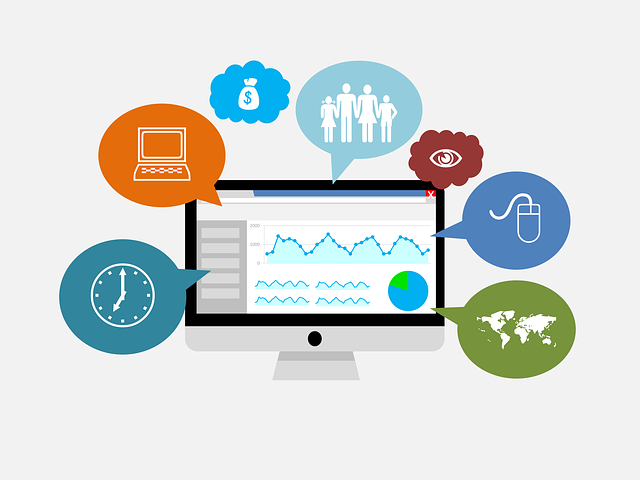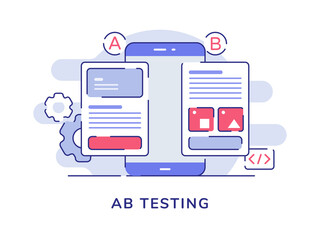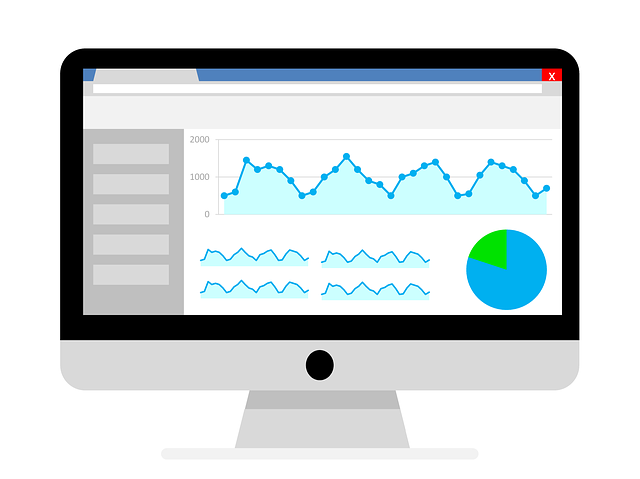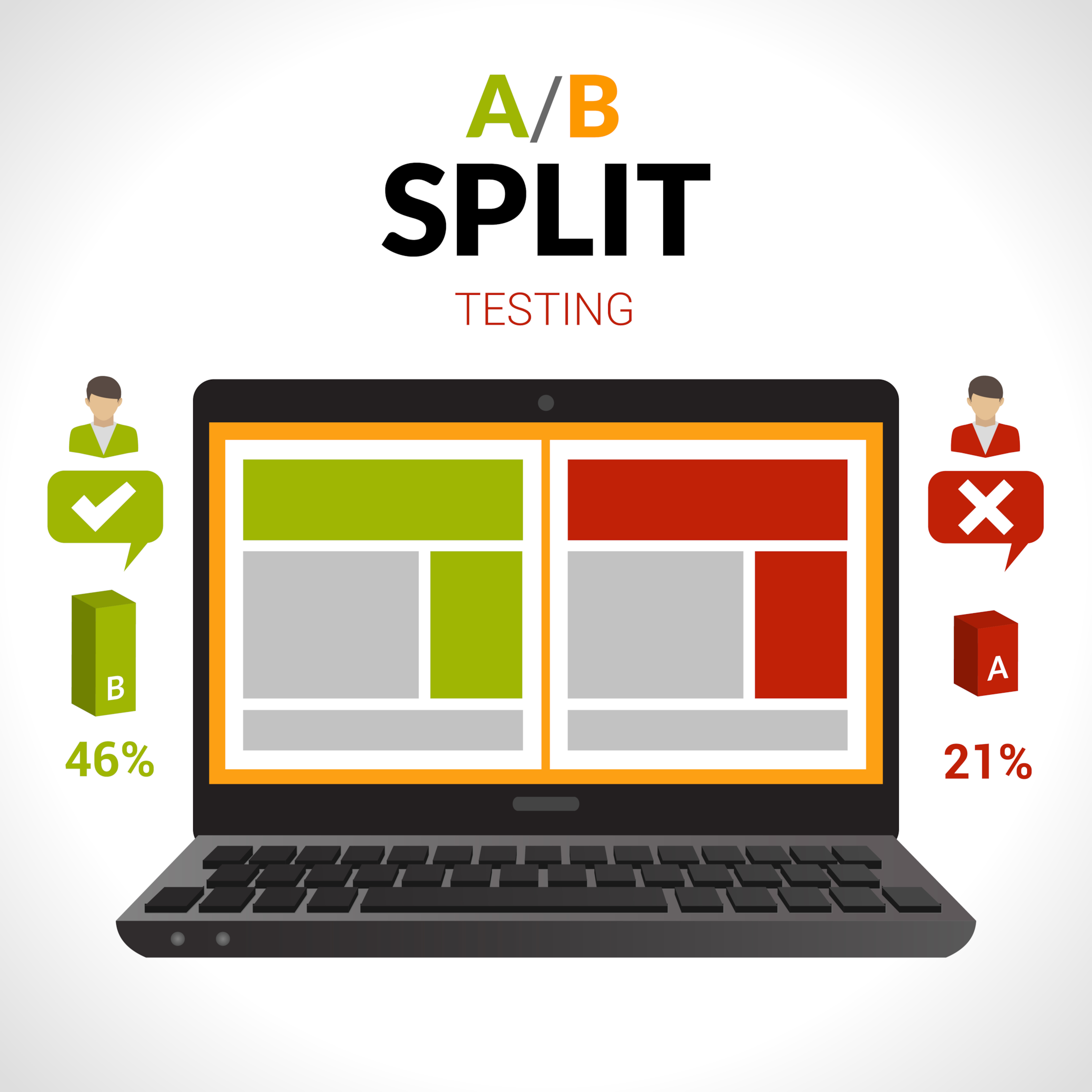We’ll increase conversions by
20-100+%
on your website.
Get a FREE Audit today
See how we can help your business increase conversion rates
The Ultimate Guide To Building A Successful CRO And AB Testing Framework

Introduction To CRO And AB Testing Frameworks
In today’s highly competitive online landscape, mastering Conversion Rate Optimization (CRO) and A/B Testing is crucial for any business seeking to boost website performance, drive conversions, and ultimately increase revenue.
Welcome to the Ultimate Guide to Building a Successful CRO and A/B Testing Framework – an indispensable resource designed for those who want to optimize their websites through data-driven decisions that deliver tangible results! In this comprehensive guide, you’ll find all the essential information, best practices, tools, and practical examples needed to create effective testing strategies.
Key Takeaways
-
CRO and A/B testing are crucial for businesses seeking to increase website performance, conversions, and revenue through an increase in website conversion rate.
-
Planning and preparation are essential when designing a successful CRO and AB testing framework. This includes setting clear goals, identifying audiences, planning a testing strategy, selecting the right tools, executing tests accurately, analyzing results carefully using statistical analysis techniques beyond just conversion rates.
-
The importance of experimentation cannot be overstated since it enables businesses to identify what works best for their target audience while minimizing risk and avoiding costly mistakes.
-
Different types of A/B testing include traditional two-option testing, multivariate testing (testing multiple variables), and A/B/n testing (testing more than two variations at once). Each type has unique advantages depending on your business needs.
Understanding The Importance Of Experimentation

Experimentation is crucial for any business looking to improve their website’s performance and increase conversions, as it allows them to identify what works best for their target audience while minimizing risk and avoiding costly mistakes.
Benefits Of CRO And AB Testing For Your Business
Incorporating CRO and A/B testing into your business strategy can lead to a multitude of advantages that directly impact your company’s growth and profitability. By continuously analyzing user behavior and making data-driven decisions, you can optimize the performance of your website or app, leading to increased conversion rates, enhanced user experience, and higher customer satisfaction levels.
For example, consider an e-commerce company using A/B testing to experiment with different elements on their product pages such as call-to-action buttons or image placement.
By isolating these variables and gathering data over time, they can identify which combinations work best at driving conversions while minimizing bounce rates. Once these insights are applied across the entire site or platform, there is potential for a significant uplift in overall sales numbers.
The Role Of Data And Insights

The success of any CRO and AB testing framework lies in the effective use of data and insights gathered through rigorous experimentation. Data-driven business decision making is a powerful tool that can transform businesses by enabling them to identify areas where improvements are needed, prioritize actions based on objective evidence, and continually test out new features and ideas to optimize their user experience.
Collecting both qualitative and quantitative data allows for a more comprehensive understanding of your audience’s needs, desires, pain points, and motivations. Qualitative data sources may include customer feedback surveys, reviews or testimonials while quantitative metrics like bounce rates, time on page or conversion funnels offer hard numbers that reveal user behavior patterns on your website or app.
For example, examining quantitative data might show that users tend to abandon purchases midway through the checkout process; armed with this insight you could design an A/B test comparing alternative solutions such as simplified forms or offering guest checkouts option.
By establishing a culture of experimentation within your organization founded upon robust analysis methods – including regular monitoring of key performance indicators (KPIs) – you lay down a solid foundation for growth driven by well-informed business decisions based on actual user engagement trends rather than gut feelings alone.
Steps To Building A Successful CRO And AB Testing Framework

To build a successful CRO and AB testing framework, it is essential to define goals multiple metrics and objectives, identify your target audience, plan your testing strategy, select the right tools for executing tests and analyzing results, evaluate and apply findings.
Define Goals And Objectives
Defining clear and measurable goals is a crucial first step in building a successful CRO and AB testing framework. By establishing specific objectives, businesses can develop targeted testing strategies to optimize conversions and improve overall performance.
To set actionable goals for your A/B tests, start by reviewing your website analytics data to identify key areas needing improvement. Once potential issues are pinpointed – such as high bounce rates on particular pages or low conversion rates for specific user segments – prioritize them based on their impact on the business objectives.
After creating an ordered list of optimization opportunities, you can then begin developing hypotheses and designing experiments aimed at driving improvements that truly align with your desired outcomes.
Identify Target Audience
To create an effective CRO and AB testing framework, it is crucial to identify your target audience. Understanding your ideal customer’s behavior, preferences, and pain points can help you design experiments that will resonate with them.
For example, if you run an e-commerce clothing store targeting women aged 18-35 who are interested in sustainable fashion, understanding their motivations for purchasing eco-friendly clothing would be important when designing tests that evaluate the effectiveness of different messaging strategies.
Plan Testing Strategy
Planning a testing strategy is a crucial step in building a successful CRO and AB testing framework. To create an effective plan, it’s important to first define your goals and objectives for experimentation.
Next, identify your target audience by analyzing their behavior on your website or app through tools like Google Analytics or heat mapping software.
Once you have defined your goals and identified your audience, the next step is to plan the testing strategy itself. This involves deciding what type of test to run (A/B testing, multivariate tests or A/B/n testing), selecting the right tools for executing the tests (such as Google Optimize), and determining which metrics to track to evaluate success.
Select Right Testing Tools
Choosing the right testing tools is crucial in building a successful CRO and AB testing framework. With so many options on the market, it can be overwhelming to decide which any one tool is best for your business needs.
Some other tools of the most recommended AB testing tools by CRO experts include Google Optimize, Adobe Target, and Optimizely.
However, it’s important to consider factors like cost, technical knowledge required, and ease of use when selecting a tool that fits your organization’s requirements. For instance, some A/B testing tools are code-free with simple drag-and-drop interfaces that make it easy for non-technical users to create tests while others require programming languages or even engineering teams to run tests on an experiment or modular platform.
Execute And Analyze Tests

Once you have designed your tests and set them up, it’s time to run them. With the right testing tools in place, executing tests can be as simple as clicking a few buttons.
But don’t let that fool you into thinking it’s easy – execution is where many businesses fall short.
Once your tests are complete, it’s time to analyze the data collected from those experiments. This step typically involves reviewing the performance of all variations tested against each other using key metrics like conversion rate or revenue per visitor.
Any additional insights gained during this stage should then be leveraged in order to refine the hypothesis for future A/B tests, leading towards more successful outcomes over time.
Evaluate And Apply Results
After executing and analyzing tests, the next step is to evaluate the results and apply them to improve your conversion rates. Evaluating test results involves using data-driven metrics to make informed business decisions on what changes need to be made for better performance.
It’s essential to examine each variation in detail, comparing their impact on key metrics such as bounce rate, click-through-rate (CTR), or average order value (AOV).
Once you’ve evaluated your A/B test results thoroughly, it’s time to apply the insights you’ve learned from them. You can then use this information to implement changes that will optimize conversions based on user behavior.
For example, if a headline change yielded an increase in CTR by 20%, consider rolling out that new copy site-wide.
Different Types Of A/B Testing

The guide covers three types of A/B testing: traditional two-option testing, multivariate testing (testing multiple variables), and A/B/n testing (testing more than two variations at once).
Traditional A/B Testing
Traditional A/B testing is a controlled experiment where two versions of a website or app are compared against each other to see which one performs better in terms of conversion rates.
For example, let’s say you want to improve the click-through rate on your landing page.
You can then measure what percentage of users clicked through from each version and compare them against each other. Traditional A/B testing is useful for identifying factors that impact user behavior such as layout design, image placement, copywriting, button color or size differences, among others.
Multivariate Testing

Multivariate testing is a type of A/B testing that allows marketers to test multiple variables at once on a single page. It’s perfect for situations where there are many different elements that could impact the user’s experience, such as different headlines or images.
One example of this would be if you were trying to optimize your landing page. You might create two variations of the headline and two variations of an image. In total, you’d have four different versions of the same web page that would be tested against each other in real-time by visitors who visit your site.
By analyzing data collected from users’ interactions with those pages, you’ll be able to determine which version performs better and has a higher conversion rate than others so that it can inform future optimization efforts.
A/B/n Testing
A/B/n testing is a variation of A/B testing that allows you to test and compare more than two versions of an element on your website or landing page. This type of testing can be particularly useful when trying to optimize larger sections of your site, such as navigation menus or entire landing pages themselves.
With A/B/n testing, you can experiment with multiple variations simultaneously and determine which one performs the best using key metrics like click-through rates, bounce rates, and conversion rates.
To conduct an effective A/B/n test, it’s important to plan your strategy carefully by defining clear goals and objectives for what you hope to achieve from each variation tested.
Steps For Conducting A Successful A/B Test

To conduct a successful A/B test, start with planning and preparation before executing and analyzing the test, and finally implementing changes based on the results.
Plan And Prepare
Before conducting A/B tests, it is essential to have a well-defined plan and preparation. The first step is to set clear goals and objectives for the test. These should be measurable, specific, achievable, relevant, and time-bound (SMART).
Once you have an experimentation platform and established your goals, identify your target audience based on demographics or behavior data.
The next step is planning the testing strategy which includes deciding what aspect of the website or landing page needs improvement through testing, selecting test variations and determining how many visitors you want to expose those variations to during the test period.
Planning also entails creating an execution timeline with milestones such as start date,end date,duration,and tracking method.
Execute And Analyze
Once you have generated test variations and selected a sample size, it’s time to execute and analyze your A/B test. First, make sure that the testing tool is properly set up to run the tests accurately.
Then, launch the test and ensure that all tracking codes are working correctly.
Once enough data has been collected, it’s time to analyze the results. Use statistical analysis techniques to determine if there is a significant difference between variations and consider other metrics besides just conversion rates such as engagement or bounce rate.
It’s essential to understand what worked in each variation and why so you can apply those learnings to future tests or broader optimization efforts for your business.
Implement Changes
After executing and analyzing the A/B tests, it is time to implement changes based on the results. The goal is to make sure that the winning variation of a test is permanently integrated into your website or marketing campaign for maximum impact.
For example, if you found out that changing the headline on your landing page led to an increase in conversions, then you should update all pages with similar headlines accordingly.
It’s important not to rush through implementing changes as well.
Overall, proper implementation of testing results will greatly benefit your business’ conversion rates and revenue growth. According to Informizely data, businesses that regularly conduct A/B testing see conversion rate increases of up to 300%.
Best Practices For Effective Testing

To ensure effective testing, it is recommended to test one variable at a time, ensure statistical significance, test consistently, have a plan for scaling and regularly review and revamp the strategy.
Test One Variable At A Time
One of the key best practices for conducting effective A/B tests is to test one variable at a time. This means that you should only change one element on server side of your website or landing page and compare it to the original, rather than making multiple changes at once.
By testing just one variable, you can accurately determine what impact it has on conversion rates and isolate which elements of own data are responsible for any improvements or declines.
For example, if you want to test whether a different headline will increase conversions on your website, don’t also change the color of your call-to-action button at the same time.
Instead, keep everything else constant and see how much impact just changing the headline has.
Ensure Statistical Significance
It’s crucial to ensure statistical significance when conducting A/B tests as part of your CRO and AB testing framework. Statistical significance refers to the likelihood that an observed difference between two variations in a test is real, rather than just due to chance or noise.
To ensure statistical significance, you need to set up your tests properly by determining the appropriate sample size needed for accurate results. A larger sample size typically leads to more reliable outcomes compared to smaller ones.
For instance, if you conduct an A/B test with too small a sample size or set your thresholds too low, then any positive conversion rate improvements could end up being insignificant because they were merely due to chance rather than actual cause-and-effect relationships.
Test Consistently

Consistency is key to successful testing. Testing regularly can help ensure that your results are reliable and accurate. It’s important to establish a schedule for testing and evaluate the results consistently.
For example, if you’re testing different versions of a landing page to see which one leads to more conversions, it’s essential to run those tests consistently. This means running multiple tests and variations simultaneously on an ongoing basis so that you have sufficient data points for analysis.
In summary, consistent A/B or a split testing and split URL testing, is vital when building a CRO or AB testing framework for your business.
Have A Plan For Scaling
Once you have successfully executed a few A/B tests and achieved some positive results, it’s time to start thinking about how to scale up your efforts across the entire website.
Having a plan for scaling is crucial for increase efficiency and maximizing the benefits of CRO and AB testing over time.
One way to ensure scalability is to involve multiple teams within the organization in the experimentation process. For example, designers, developers, product managers, and marketing teams can all contribute expertise towards creating more impactful tests.
Additionally, investing in advanced tools like Adobe Target or Optimizely can help streamline optimization efforts by automating data analysis and providing real-time insights into user behavior.
Review And Revamp Strategy
To ensure that your CRO and AB testing framework is delivering the desired results, it’s important to regularly review and revamp your testing strategy. This involves analyzing the data collected from previous tests, identifying areas for improvement, and tweaking your approach accordingly.
One effective way to do this is by establishing a consistent process for post-experiment analysis. This could involve reviewing the performance metrics of each test variation, comparing results across different audience segments or traffic sources, and evaluating audience feedback.
Tools And Resources For CRO And AB Testing

In this section, we’ll explore various tools that can help you with your CRO and AB testing efforts, including A/B testing software, heat mapping tools, user feedback tools, analytics tools and tracking tools – all designed to help you gain insights into user behavior and make informed optimization decisions.
A/B Testing Software
One of the critical components for building a successful CRO and AB testing framework is selecting the right A/B testing software. There are many options on the market, each with their unique features and capabilities.
Some popular choices include Google Optimize, Adobe Target, and Optimizely. The right tool will depend on your business needs and level of technical expertise. For non-technical users, WYSIWYG editors like Google Optimize offer an easy-to-use code-free solution run multiple tests, while more complex tests require coding knowledge or tools like Optimizely’s advanced source code editor.
Additionally, premium versions offer basic features and more in-depth reports and analysis engines compared to free or open-source tools.
Heat Mapping Tools
Heat mapping tools are a crucial part of CRO and AB testing, as they provide valuable insights into where users are interacting with your website. These tools use colors to visually analyze data, making it easy to identify which parts of the page receive the most engagement from visitors.
One popular example of a heat mapping optimization tool is Crazy Egg, which offers both scroll maps and click maps. The scroll map displays how far down the page users typically scroll before losing interest or navigating away, while click maps highlight which specific areas on the page receive the most clicks.
User Feedback Tools
User feedback tools are an essential part of any successful CRO and AB testing framework. They allow businesses to gather feedback from actual users, providing valuable insights into what works and what doesn’t when it comes to website design and functionality.
Hotjar is a powerful tool that enables businesses to see how users interact with their websites through heatmaps, session recordings, and surveys. Qualaroo uses targeted micro-surveys to collect user feedback throughout the customer journey.
UserTesting provides user testing services where businesses can get real-time video feedback from customers on their website, mobile apps or product.
By utilizing these user feedback tools along with other resources such as analytics software like Google Analytics, companies can build a strong foundation for experimentation in CRO and AB testing.
Analytics And Tracking Tools
Analytics and tracking tools are essential components of the CRO and AB testing framework, allowing businesses to gather data, do analysis engine generate insights and make informed decisions.
Google Analytics is a popular analytics tool that provides comprehensive reports on website traffic, user behavior, conversions, and more.
Apart from Google Analytics, there are several other analytics and tracking tools such as Hotjar’s Heat Mapping Tool for visualizing how users interact with web pages; UserTesting.com which allows you to run quick tests with up to five users in real-time; Mixpanel for product teams to understand user behavior across the entire customer journey; Omniture by Adobe for deeper analysis of visitor behavior and user engagement on your website/app; Crazy Egg’s A/B Testing Tool that lets you easily create multiple versions of a landing page without changing code among others.
Common Mistakes To Avoid In CRO And AB Testing

In the section on common mistakes to avoid in CRO and AB testing, we’ll cover how to test consistently, ensure statistical significance in split tests, avoid ignoring audience feedback, and more.
Not Testing Enough Variables
One common mistake in CRO and AB testing is not testing enough variables. This can lead to inaccurate results and hinder the optimization process. It’s important to test multiple variations of different elements such as headlines, images, and call-to-actions to truly understand what resonates with your audience.
For example, if you only test one variation of a headline but don’t change anything else on the page, you may miss out on valuable insights that could have been gleaned from testing additional variables.
Ignoring Audience Feedback
One of the most common mistakes businesses make in CRO and AB testing is ignoring audience feedback. It’s important to pay attention to what your users are saying about their experience on your website or app.
User feedback can provide valuable insights into issues that might not be immediately apparent through data analysis alone.
To avoid this mistake, make sure to gather user feedback regularly and take it into consideration when planning your testing strategy. Tools like heat mapping and user feedback software can help with this process by providing visual representations of how users interact with your site or app, as well as direct comments from users themselves.
Additionally, involving user research teams or conducting surveys can help identify pain points for potential improvements in the testing phase.
Not Tracking The Right Metrics
One of the most common mistakes businesses make in CRO and AB testing is not tracking the right metrics. Tracking the wrong metrics can lead to misguided decisions, wasted resources, and even a regression in performance.
For example, focusing solely on page views or click-through rates without considering conversion rates may result in high traffic but low conversions. It’s crucial to identify which key performance indicators (KPIs) matter most for your business and track them consistently throughout the testing process.
This allows you to measure whether your changes have had a positive impact on important metrics like revenue, customer retention, or user engagement.
Rushing To Make Changes
One common mistake to avoid in CRO and AB testing is rushing to make changes without properly analyzing the test results. It can be tempting to quickly implement changes when a test shows a significant difference, but this can lead to false conclusions and ultimately harm your conversion rates.
For example, if you run an A/B test on a landing page and notice that variation B had a higher conversion rate than variation A, it may be tempting to immediately switch all traffic over to variation B.
However, you should first analyze the data more deeply – for example checking whether there were any confounding variables (such as differences in traffic sources) or whether visitors who saw both variations behaved differently from those who only saw one of them.
Conclusion And Next Steps For Building Your Own CRO And AB Testing Framework

Congratulations! You’ve now learned about the power of CRO and AB testing frameworks to help your website grow. With this ultimate guide, you can start building an experimentation culture that optimizes user experience and conversion rates.
Remember to define goals, identify audiences, plan a strategy, test consistently, evaluate results, and scale effectively. Use all the tools and resources available to make it easier for you to conduct tests without technical knowledge.
Avoid common mistakes like not tracking metrics or ignoring audience feedback. Keep testing one variable at a time until you achieve statistical significance that leads to winning variations over time.








